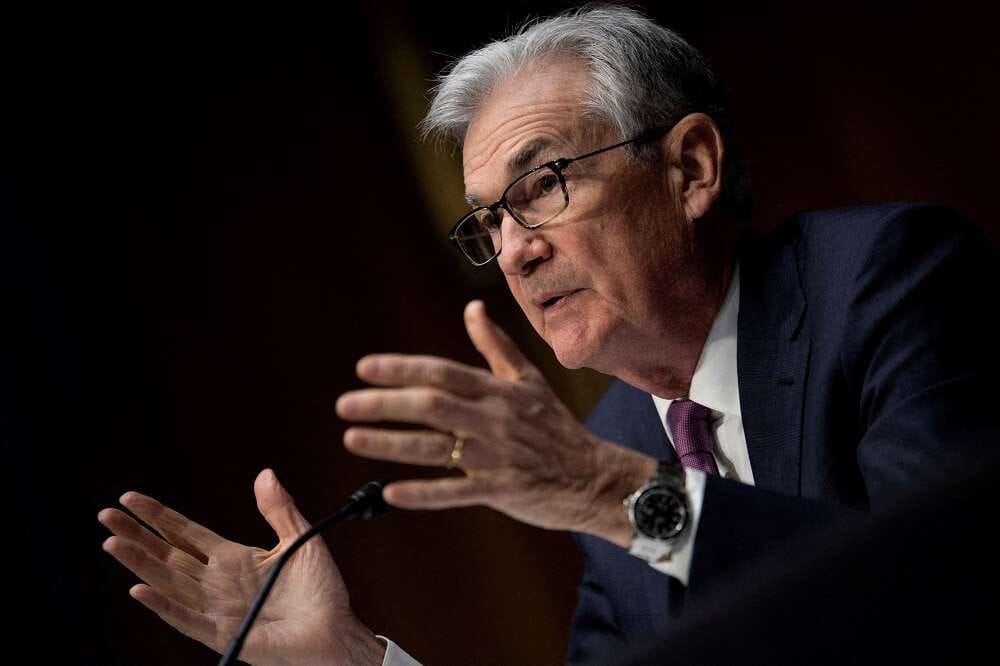
By Carolyn Cohn
LONDON (Reuters) – U.S. stock futures were indicating a lower open on Wall Street on Friday while world stocks were heading for a small drop on the week, as investors wait to see if Federal Reserve Chair Jerome Powell will indicate further rate hike pain.
Investors have pared back expectations that the Fed could pivot to a slower pace of rate hikes, as U.S. inflation remains at 8.5% on an annual basis, well above the central bank’s 2% target.
But Powell’s speech at 1400 GMT at the Fed’s annual conference at Jackson Hole will be scrutinised for any indication that an economic slowdown might alter its strategy.
Interest rate futures now imply a 60% chance of a 75 basis point (bps) Fed hike in September.
“The Fed and other central banks have been falling asleep at the wheel over inflation, now they are desperate to regain credibility,” said Luca Paolini, chief strategist at Pictet Asset Management.
“Economists are clearly calling for the Fed not to blink, and if anything accelerate the pace of tightening.”
U.S. S&P futures fell 0.35% after the S&P 500 index gained 1.4% on Thursday.
The MSCI world equity index was steady on the day and was heading for a 0.5% drop on the week.
European stocks dropped 0.44%, while Britain’s FTSE 100 was steady.
Consumer morale in the euro zone’s two biggest economies diverged starkly in August as French consumers benefited from fresh government measures while concerns over rising energy bills hit their German counterparts, surveys showed on Friday.
Investors pulled money from both equity and bond funds in the week to Wednesday, with European equity funds seeing their 28th consecutive week of outflows in the longest streak since 2016, BofA said in a research note citing EPFR data.
MSCI’s broadest index of Asia-Pacific shares outside Japan rose 0.55% to one-week highs.
Fed officials on Thursday continued hammering the point that they will drive rates up and keep them there until inflation has been squeezed from the economy.
“So it is a fair bet that the Powell speech will take a similar turn today,” said Robert Carnell, regional head of Research, Asia-Pacific, at ING.
“If so, the most likely market reaction would be a rise in yields at both the front and back of the yield curve, a sell-off in equities and dollar strength, as markets seem to have been positioning themselves for a more supportive set of comments.”
The yield on benchmark U.S. 10-year Treasury notes rose 5 bps to 3.0706%, while the two-year yield was flat at 3.3742%.
Germany’s 10-year bond yield rose 2 bps to 1.344% after hitting its highest level since early July on Thursday at 1.39%.
Currency markets were relatively calm after the dollar recently hit 20-year highs against a basket of currencies on the U.S. rate hike expectations.
The dollar index dipped 0.25% on Friday, while the euro rose back above parity with the dollar, up 0.4% to $1.0013. The dollar gained 0.3% to 136.89 yen.
The pound was steady at $1.1831, holding above recent 2-1/2 year lows, after Britain’s energy regulator said energy bills will rise 80% to an average 3,549 pounds ($4,200.95) from October.
RBC analysts forecast annual energy price caps to rise to more than 6,000 pounds in April 2023.
As wholesale gas and electricity prices surge, millions of people in Europe are now spending a record amount of their income on energy, data shows.
“The huge rise in energy prices in Europe and demand destruction will cause massive disruptions to global supply chains,” said Tim Ash, strategist at BlueBay Asset Management.
However, oil rose on Friday on signs of improving fuel demand, although further gains were capped as the market awaited Powell’s speech. [O/R]
Brent crude rose 1.66% to $100.99 per barrel and U.S. crude gained 1.42% to $93.84 a barrel.
Spot gold was at $1,746 per ounce, down 0.70%. [GOL/]
($1 = 0.8448 pounds)
(Additional reporting by Stella Qiu in Sydney; editing by Sam Holmes, Kim Coghill and Chizu Nomiyama)


